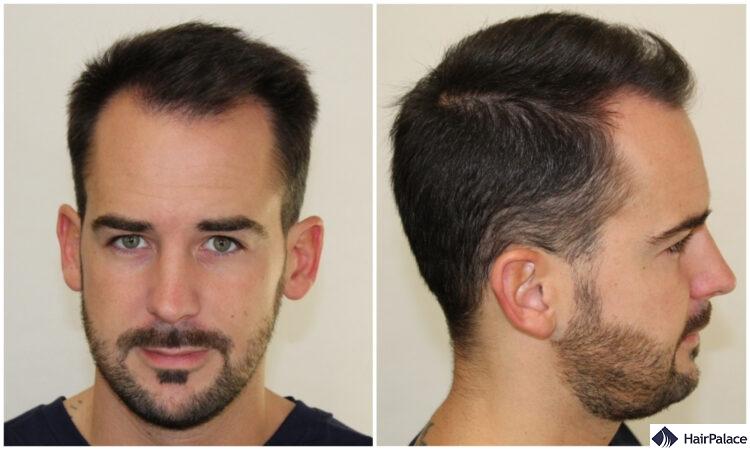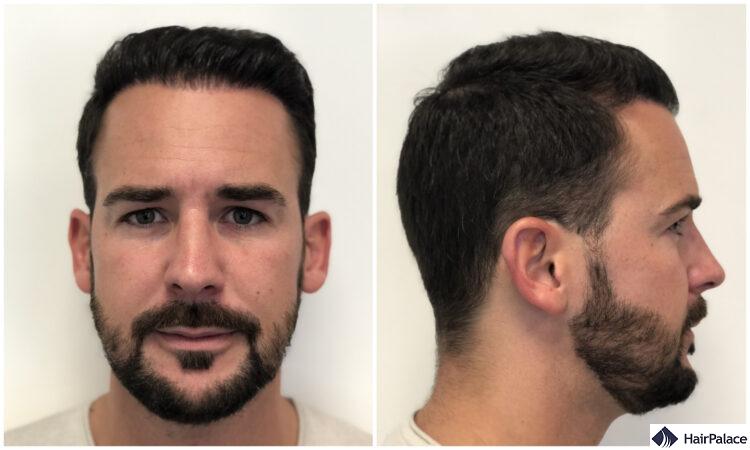Dense Hairline, Energetic Look – Maxim’s Hair Transplant
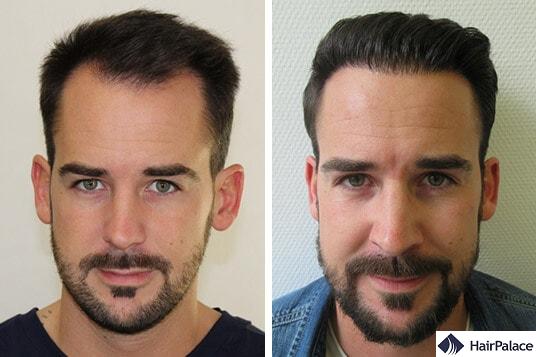
- Maxim’s FUE2 transplantation
- After the surgery
- Three weeks and three months post-op
- A year after the surgery
In the summer of 2017 a young man contacted our clinic.
The 31-years-old Maxim told us he can’t ignore his thinning hairline anymore.
We explained that experiencing hair loss is not a unique thing at his age. Genetics and hormones are largely responsible for it and we’ve had several cases when men started to lose their hair in their early 20s.
During our 15-20 minutes long hair transplant consultation we closely examined our patient’s area of concern. We saw that his hairline’s crawled up and the density of the front has reduced over the years.
Maxim would’ve loved to get this area filled up, so we drew a plan for his new hairline together.
Once he was satisfied with the rough shape and position, we told him that he needs at least 5000 new hairs to achieve the look.
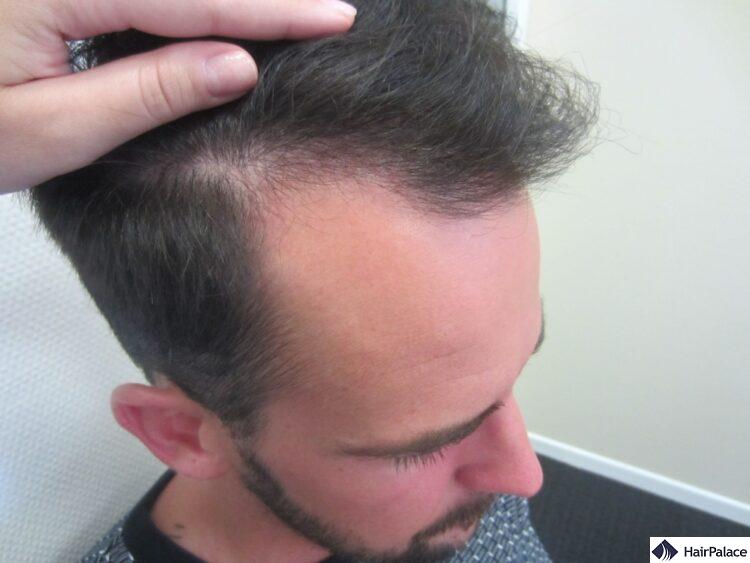
Once Maxim was sure that we can help, he booked the date of his hair transplant at our Budapest hair clinic.
In the months leading up to his surgery, we arranged his accommodation and airport transfers and made sure that he received all the necessary information.
Before the procedure, we always need a blood test result from the past 3 months to exclude possible complications. Our patients are free to arrange them themselves but we can also book you an appointment at our partner laboratory. Maxim sent us his results in advance – as his results were great, we could confirm that the surgery can go ahead as planned.
Maxim’s FUE2 transplantation
We performed Maxim’s hair transplant surgery on the 7 and 8th of October 2017.
As Maxim needed 5196 hairs to increase the density at the front, the surgery had to take 2 days to complete.
For each procedure, we use the FUE2 Safe System technique. This means, that we transplant existing hairs from the donor area (usually the nape) to the treated area one by one.
The whole procedure is carried out under local anaesthesia to make sure our patient won’t feel any pain.
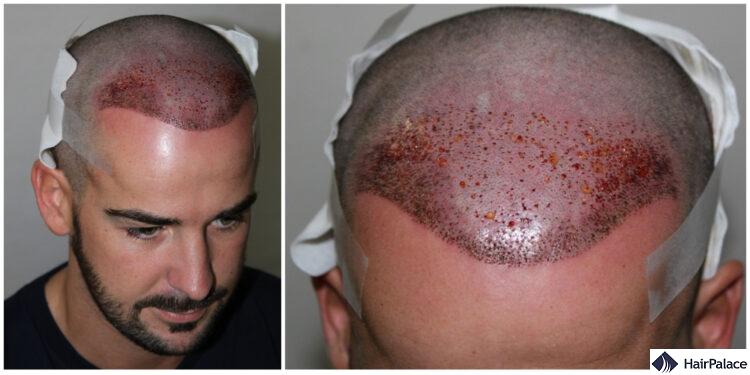
After the surgery
In the first period, the scalp must be treated carefully.
For seven days after the operation, nothing can touch the implanted area except the sterile saline solution.
Patients must avoid drastic weather conditions (such as extreme sunshine and cold) or using chemicals. These steps are important so the scalp can heal and the new hairs can anchor in properly.
In the 12 months following the hair transplant, we have check-up examinations regularly. This way, we can follow the healing and the new hair growth step by step.
The first check-up is after the first week.
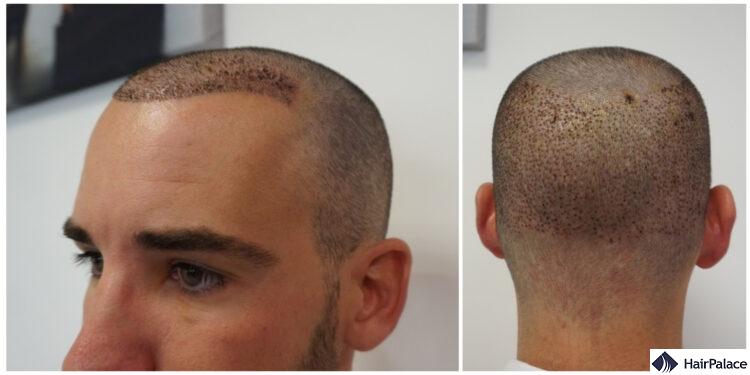
Maxim told us he followed the rules and instructions carefully. And his photos attested to that – there were no infection or inflammation.
The scabs were there, so we explained to him how he can start removing them. At this point, patients have to soak the scalp in lukewarm water (under the shower, or in the bathtub), so the scabs soften up. Then, they have to gently massage through the scalp to help them come off.
Three weeks and three months post-op
All scabs must be removed by the third week. Then, patients can start using baby shampoo to wash their hair.
Around the 3-weeks mark, the transplanted hairs start to fall out, often scaring patients. But, there’s no need to worry as this is a part of the regular process. The reason why this happens is that the hair-bulbs enter the resting phase of their life cycle. This period lasts for a couple of months – the new growth usually starts around the 4th post-op month.
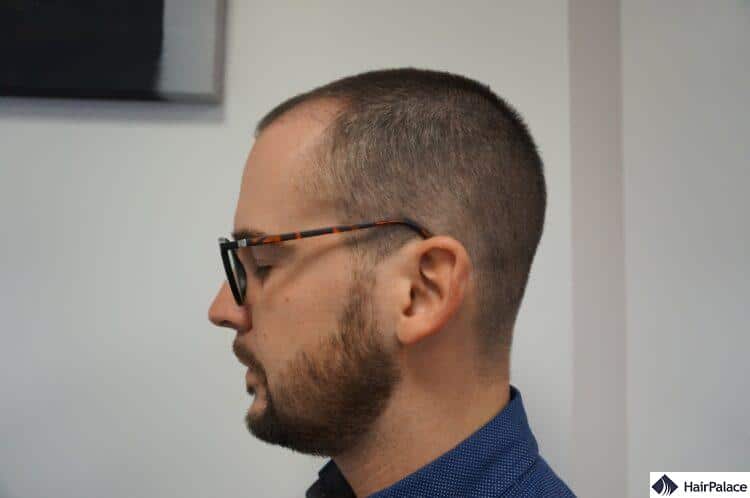
We checked Maxim’s condition 3 months after the surgery. He told us that although many new hairs started to grow, there are still empty areas at the front.
We assured him, that the implanted area progresses very well and he should see more growth in the next months.
Maxim visited us for his 6 months’ check-up in April. He was glad to see how much his front has changed. We were happy to find everything in order, and see how dense his hair looked.
A year after the surgery
After the surgery, it takes at least 12 months for all the transplanted hairs to grow.
This is when we have the last check-up to take a look at the condition of the hairs and the scalp.
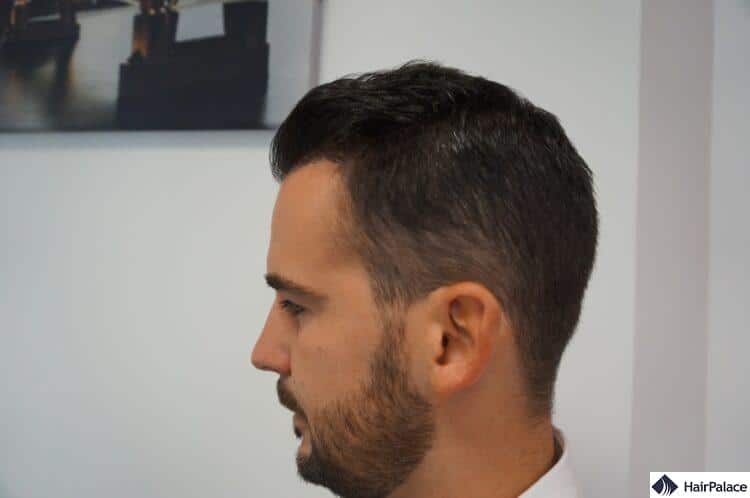
Maxim sent us photos so we could properly assess the regrowth.
We saw that his hair transplant was an overwhelming success, the implanted hairs have grown out well.
Over the phone, Maxim told us that he finds the result astonishing. His confidence returned, and he was happy with how wonderful his hairline turned to be.
